The modern competitive landscape thrives on innovation and adaptability. As a creator, your vision is the spark, but the fuel that propels that vision to reality is the team you assemble. This is where A-Players come into the picture – individuals who excel not just in skill, but in passion, adaptability, and synergy with your vision. Finding them is a challenge, but one worth undertaking. Let’s delve into the art of hiring these A-Players.
Why Hiring the Right People is Important
The dynamism and success of any creator-led venture hinge largely on its human capital. A-Players, or those who excel in their roles and synergize effortlessly with a company’s ethos, serve as the backbone to this success. Their unmatched prowess goes beyond just completing tasks efficiently; they bring an infectious energy, catalyzing growth and setting a bar of excellence. In fact, companies like Inversal that perform business turnarounds claim that the “secret” to their success is having a team of A-Players. Their proactive mindset often leads to innovations, pushing projects to achieve even more than initially envisioned. Furthermore, these high-performing individuals tend to uplift the morale of the entire team, fostering a vibrant, collaborative, and results-driven company culture.
From a more pragmatic perspective, hiring the right people is also a sound financial strategy. A-Players, while potentially commanding higher initial salaries, often present better long-term value. Their capability to minimize errors, optimize processes, and introduce profitable innovations offers a significant return on investment. Conversely, the cost of hiring misfits—both in terms of monetary losses from underperformance and potential re-hiring and in the intangible strain on team morale—can be detrimental. Thus, for creators who aspire for greatness in their ventures, investing in the right talent is not just beneficial; it’s imperative.
Crafting an Outstanding Job Description
A job description is more than just a list of responsibilities and requirements; it’s the first handshake between an organization and potential talent. This initial touchpoint sets the stage, offering a window into the company’s ethos, culture, and expectations. A meticulously crafted job description not only defines the role’s contours but also paints a vivid picture of the company’s mission and the kind of individual it seeks. It acts as a beacon, attracting those who align with the organization’s values and vision while naturally filtering out those who might not be a fit.
However, to achieve this level of precision and allure, creators must strike a balance between clarity and appeal. While it’s crucial to be detailed about the skills and qualifications required, it’s equally vital to weave in the company’s story and values. Offering insights into growth opportunities, potential career trajectories, and the company’s work culture can resonate with A-Players. They’re not just looking for a job; they’re seeking an environment where they can thrive, contribute, and grow. Thus, an outstanding job description serves as a bridge, connecting a company’s aspirations with the dreams of potential candidates.
Use Screening Applications
In the digital age, the recruitment process is no longer confined to traditional methods like face-to-face interviews and paper resumes. Screening applications have revolutionized the way organizations identify, evaluate, and shortlist potential candidates. These technological tools offer a multifaceted approach, allowing employers to assess technical prowess, behavioral tendencies, and even cultural fit, long before an in-person interaction. This not only streamlines the initial phases of recruitment but also ensures that only the most aligned and competent candidates progress further, optimizing both time and resources.
Yet, while the benefits are manifold, the key lies in the strategic utilization of these tools. Skill-based tests can provide a snapshot of a candidate’s proficiency in specific areas, while personality assessments can shed light on their temperament, work ethic, and team compatibility. Even video interviews, which combine the personal touch of traditional interviews with the convenience of technology, have become invaluable. By integrating these applications effectively, companies can sculpt a more efficient, targeted, and successful recruitment process, ensuring that they’re well-equipped to identify and attract the A-Players they seek.
The Underrated Value of Reference Checks
In the comprehensive tapestry of the hiring process, reference checks often serve as the final threads weaving it all together. While resumes and interviews provide a firsthand perspective of a candidate, references offer a third-party validation, giving employers an external viewpoint on an individual’s past performance and workplace demeanor. This step, though sometimes glossed over, provides an unparalleled depth of insight. By speaking with those who’ve previously worked with the candidate, employers can gauge the consistency of the information provided, better understand the individual’s strengths and areas of growth, and ascertain their ability to function and thrive within team dynamics.
However, the efficacy of reference checks isn’t just in the act of making the call but in the questions posed and the nuances explored. Going beyond the typical queries about job responsibilities or punctuality, it’s essential to dig deeper. Questions about how the candidate handles stress, their collaboration with colleagues, or even their adaptability to change can yield invaluable information. When executed diligently, reference checks act as a crystal ball of sorts, offering a glimpse into the potential future dynamics of the candidate within the organization, ensuring that employers make informed and holistic hiring decisions.
Develop a Training Program
Once the recruitment process culminates in a successful hire, the journey of integrating the new talent into the organization truly begins. Herein lies the importance of a robust training program. This initiative serves dual purposes: firstly, it equips the new employee with the tools, knowledge, and context required to perform at their best, ensuring they’re not left floundering or overwhelmed. By introducing them to company protocols, methodologies, and nuances, a training program paves the way for them to become productive assets swiftly and efficiently.
However, beyond the tangible aspects of job performance, training programs also play a pivotal role in cultural integration. By creating structured onboarding experiences, companies can communicate their values, ethos, and expectations, forging a deeper connection with the new employee. This fosters a sense of belonging, laying the groundwork for long-term commitment and alignment with the company’s mission. Moreover, continued learning opportunities, mentorship initiatives, and feedback mechanisms within these programs can further nurture talent, ensuring that both the individual and the organization grow symbiotically. In essence, a well-crafted training program is not just an orientation tool, but a vital component in shaping the future trajectories of employees and the company at large.









